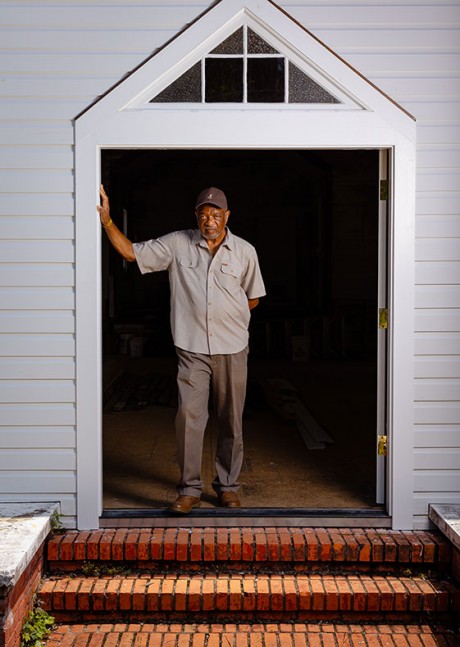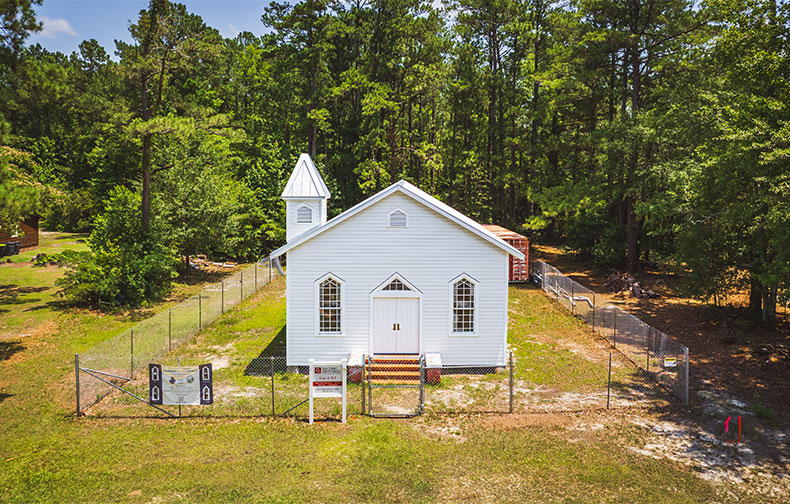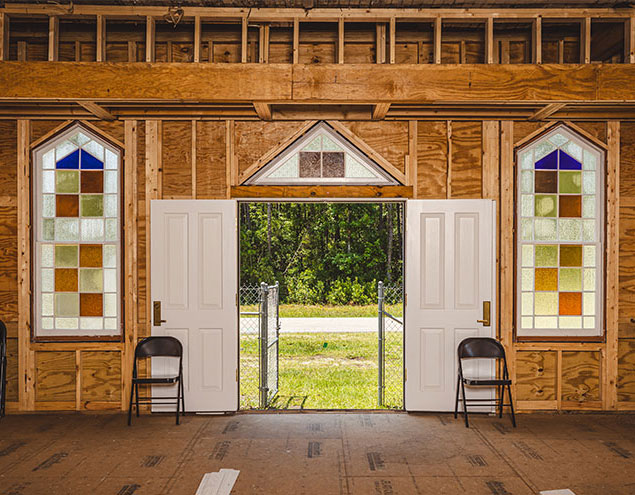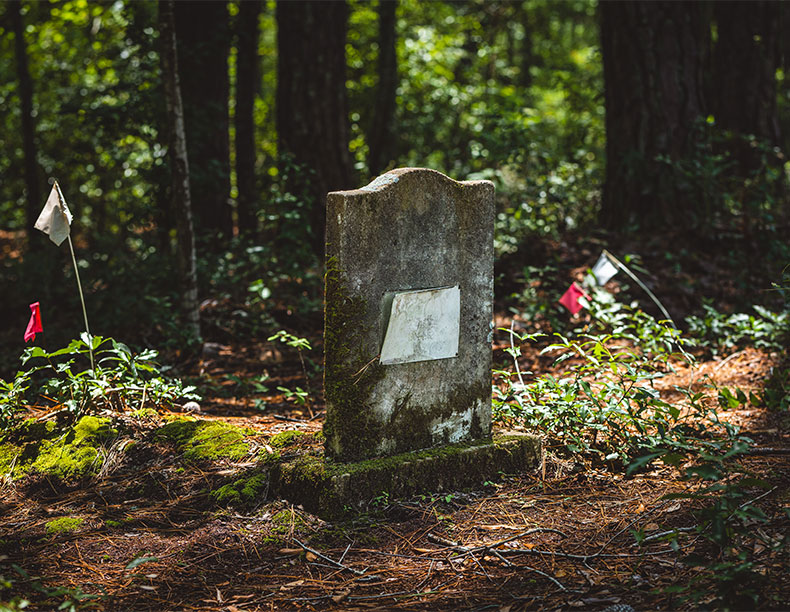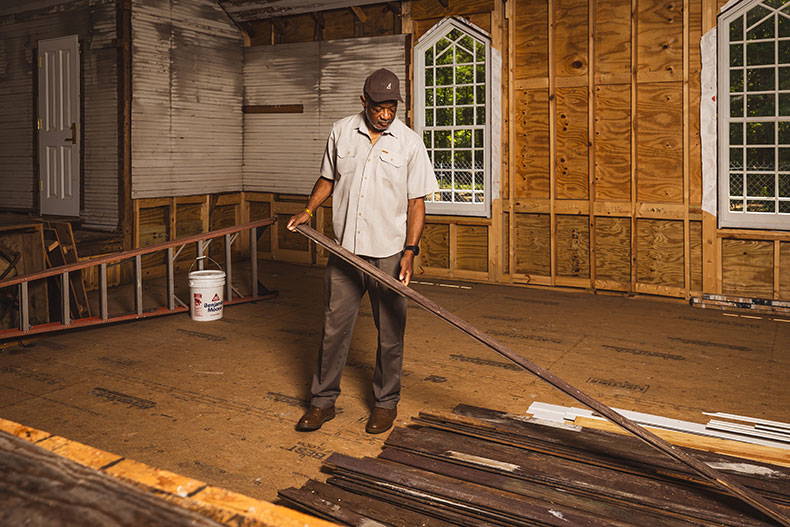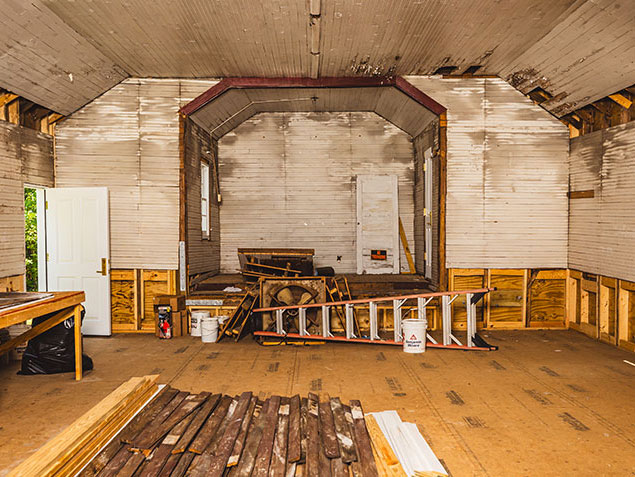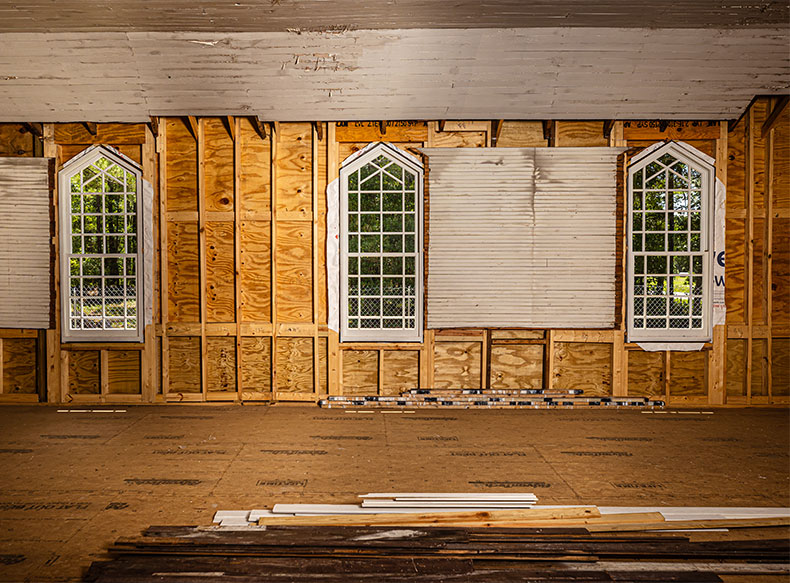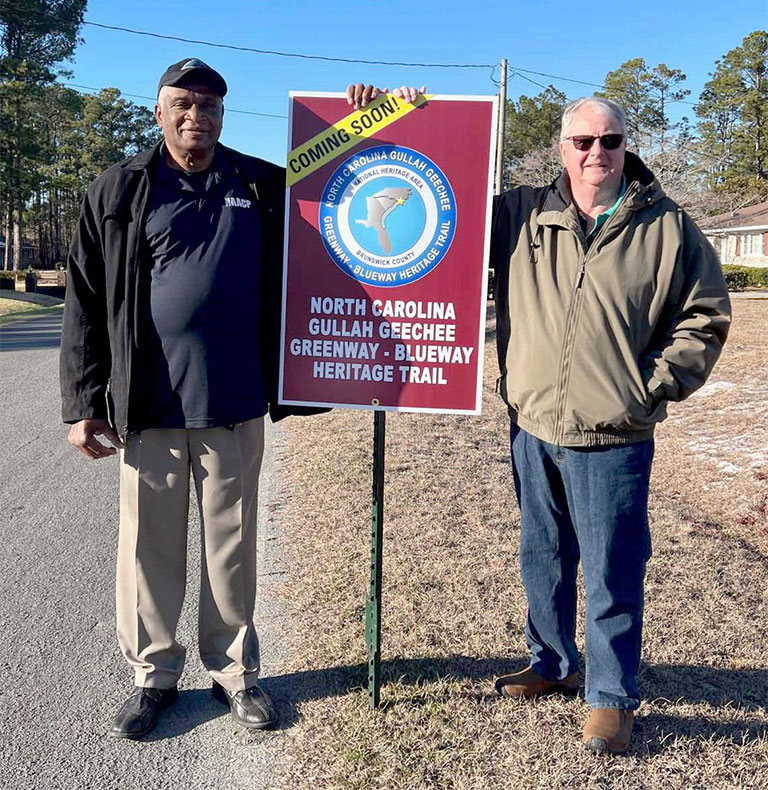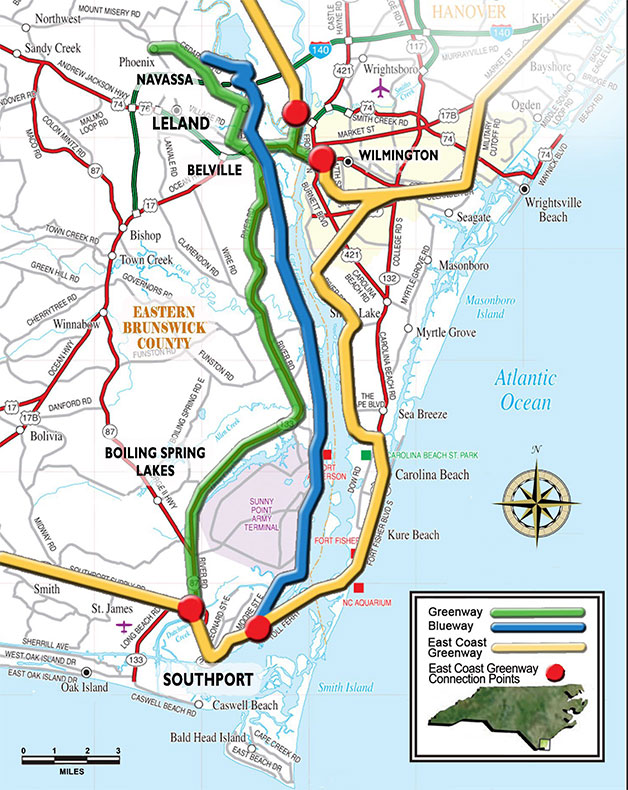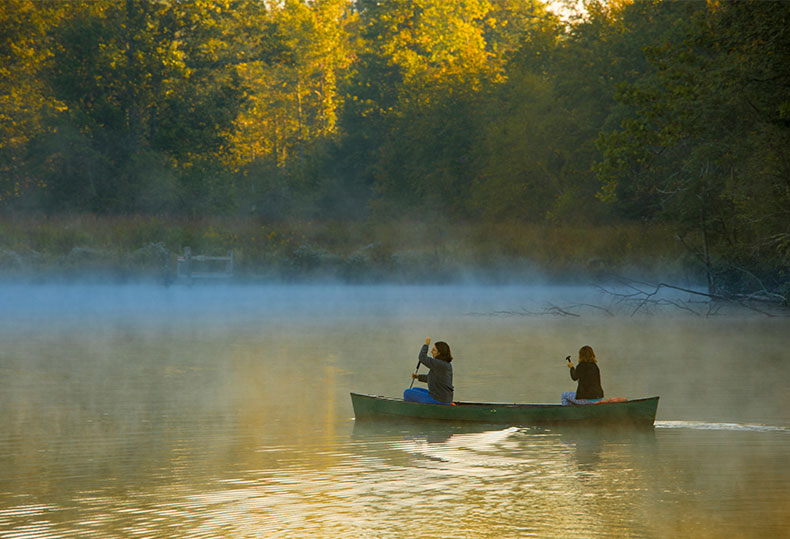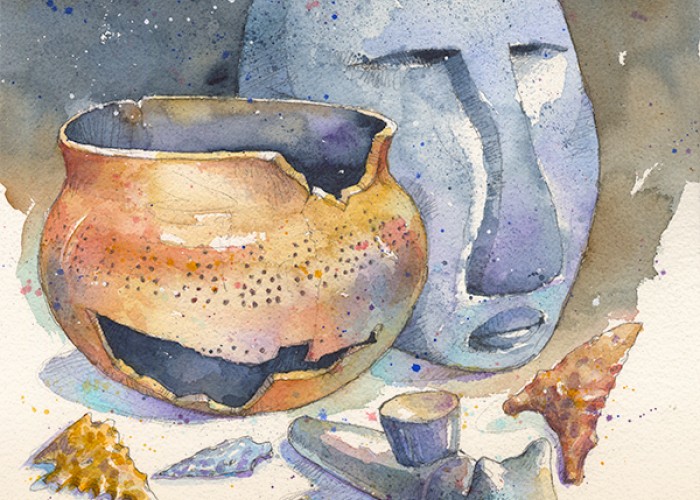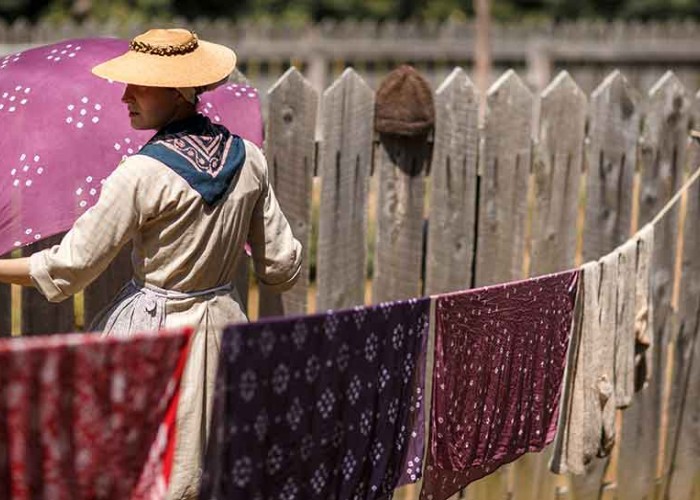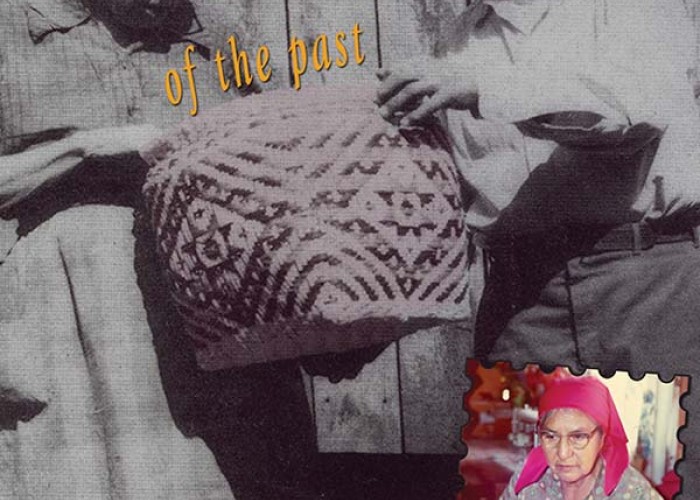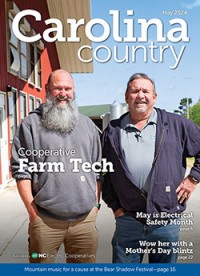Preserving the Past
Community leaders are restoring a Brunswick County chapel
By Emory RakestrawIn the town of Navassa, in Brunswick County, Reaves Chapel African Methodist Episcopal Church has served as a community landmark since the 1860s. Its bell would ring out to signify a time for worship, to share celebrations — a comforting sound chiming over the coastal corridor of floodplains.
Alfonso Beatty grew up hearing that bell and attending community programs at the chapel, which served as a focal point for the town throughout the Jim Crow Era. But services stopped in 2005, and as the chapel became dilapidated, it seemed the bell would cease to ring — perhaps forever. Al and his brother George knew something had to be done.
“Once they shut the door, the church sat there and started deteriorating,” Al says. “We felt ashamed to lose the history, and development was encroaching upon the church.”
A study group was formed, and in 2013, the Cedar Hill/West Bank Heritage Foundation was created, where Al serves as president.
In 2016, The Coastal Land Trust joined the effort. A memorandum of understanding was formed with the Historic Wilmington Foundation, providing more resources for restoration. In 2022, two renowned restorers from Wilmington took on the project.
“They both worked diligently and got the chapel to a pretty good place. The church has original stained glass windows — we removed those and sent them off to get restored,” Al explains. “The original bell, we had to take it off and store it while we were working to stabilize the church. We tried to save as much as we could, but we had to get new siding. All of that is in process and in place, and now we’re waiting on permits.”
Eponymously named after Edward Reaves, a man formerly enslaved at Cedar Hill Plantation, Reaves Chapel is one of the most historically notable African American structures of the area. It was originally built by formerly enslaved descendants of the Gullah Geechee people from the west coast of Africa, who were brought against their will to tend rice fields along the Southeast Atlantic coast. Originally located on the bluffs of the Cape Fear River, in 1909 the congregation enlisted logs and a team of oxen to move the chapel to its current location on Cedar Hill Road.
The chapel itself is simple, with a classical wood frame structure, colored glass windows and propped on four cornerstones. Few Civil War and post-Civil War era structures remain in this area, with Reaves Chapel being one of the only examples.
“When the church was in its original location, about a mile from where it is now, the community used to meet there on Sundays, and everyone would dress up in their Sunday best,” Al says. “They’d go to worship, but also, the African American community didn’t have a lot of structural places they could go. Schools and churches were it. We were segregated. After worship, a lot of the congregation would look forward to meeting each other on the property and catching up. It was a sense of community, and people look forward to that.”
As the chapel rounds its final stages of restoration, Al predicts by early 2024 it will be ready to welcome visitors. It will also tie into the ongoing Gullah Geechee Greenway/Blueway Heritage Trail currently in the works (see below), serving as a stop-off point of interest. For Al, this project has now spanned 18 years, and he’s encountered both challenging and rewarding aspects.
“The most rewarding is to see the church now from the condition it was in. If we had a hurricane in 2022, the church would not have survived,” he says. “To grow up with the patrons of the church and realize the amount of blood, sweat and tears, and putting their last little savings to dedicate to the church and now have it be restored the way it is, I can see them smiling. It will be a shining example of the resiliency of our African American parents, of what they have contributed to the community.”
With the help of organizations like The Orton Foundation, The Coastal Land Trust, The Historic Wilmington Foundation and Cedar Hill/West Bank Heritage Foundation, the chapel has now been leveled, the roof repaired and the steeple restored and returned, there’s new custom siding, and ongoing landscaping and interior restoration. And most importantly, the bell will soon ring again.
A Cultural Corridor
Reaves Chapel is within the Gullah Geechee Cultural Heritage Corridor (gullahgeecheecorridor.org), a National Heritage Area established by Congress. Its purpose is to preserve, share and interpret the history, traditional cultural practices, heritage sites, and natural resources associated with Gullah Geechee people of coastal North Carolina, South Carolina, Georgia and Florida.
In Brunswick County, a proposed 30-mile greenway/blueway heritage trail would highlight local Gullah Geechee sites by connecting existing and proposed riverfront walkways, kayak launches, parks and multi-use paths. This generational effort is being supported by research and grants from dozens of organizations, including the Wilmington Urban Area Metropolitan Planning Organization (WMPO).
“The WMPO applied for and received an NCDOT Paved Trails and Sidewalks Feasibility Study Grant in 2023 to evaluate options for the greenway,” said Abby Lorenzo, deputy director for the WMPO. “Community involvement will be a crucial element of the feasibility study. Outcomes of the study will include trail alignment and cross section recommendations, as well as identification of potential impacts to environmental features. This information will assist each locality in advancing portions of the trail as future funding for design and construction is identified and committed.”
Supply-based Brunswick Electric contributed $1,200 to the effort through its Community Grants program.
— Tori Jones, Brunswick Electric
Learn more
Visit the NC Gullah Geechee Greenway Blueway Heritage Trail website to learn more.
-
History comes to life
-
Share this story:

